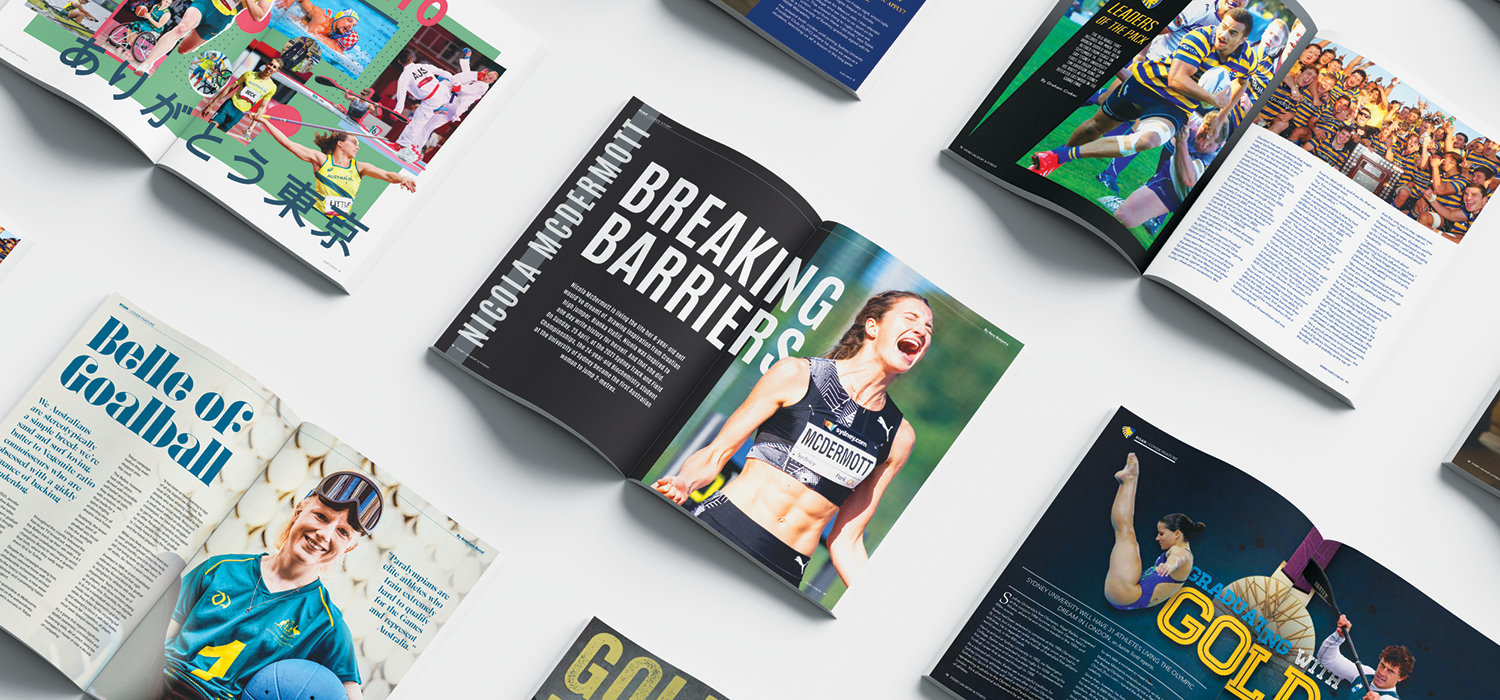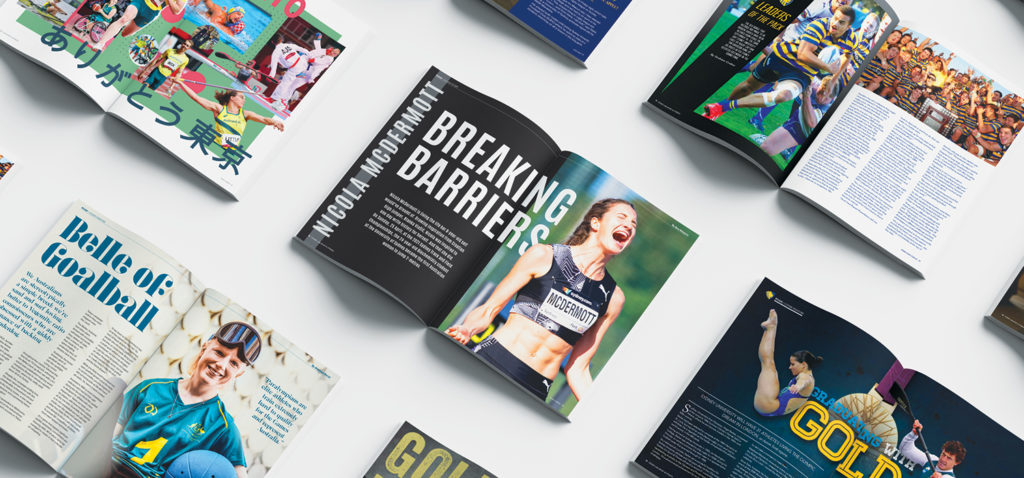From the first edition in 2008, ROAR has been at the forefront of sport reporting at all levels across campus.
When tasked to write an article behind the stories in the first 49 editions of ROAR, a quick perusal revealed the startling breadth and depth of sport at the University of Sydney and the important role it plays on campus, in the local community and on club, state, national, and world stages.
ROAR was the brainchild of Rob Smithies, the then head of Sydney Uni Sport & Fitness. His welcome in the first edition in February 2008 was titled ‘The Roar of the Lion’. “When you become part of Sydney Uni Sport & Fitness, you take your place within the oldest and richest sporting tradition,” he wrote. “But we are not focused on the past. Our goal is ahead. Sport and fitness have never been stronger and bolder than at the University of Sydney.”
Flicking through these pages, you will see great athletes and some of the highest level sporting facilities in the country. Alongside the world-beaters and Olympians are regular people, like you and me, popping into the gym or swimming centre on the way to and from work and study; hitting the rugby field or the cricket pitch; the tennis or basketball court on the weekend.
Each edition over the past 12 years has told the tales of our success. While clubs have been a constant source of inspiration, what has been most impressive is the growth of women’s sport on campus. The first issue opened with a cover story about Sydney University athletes hopeful of selection for the 2008 Beijing Olympic and Paralympic Games. Among the many contenders listed were; hurdler Justin Merlino, middle-distance runner Lachlan Renshaw, water polo legend Trent Franklin, wheelchair basketballer Sarah Stewart, and wheelchair athlete Angela Ballard. The latter three had already represented Australia at the 2004 Athens Games.
The number of different clubs with athletes preparing for Games’ selection was also telling. They included basketball, rowing, canoe-slalom, diving, swimming, gymnastics, cycling, hurdling and judo.
Since then, ROAR has covered pre- and post-Games stories of the many Sydney University athletes who competed at the London, Rio de Janeiro and Tokyo Olympics and Winter Games at Vancouver, Sochi and PyeongChang. Indeed, it was a paragraph in a ROAR story that compared the medal tally from Sydney University athletes to some small, and not so small, countries.
Not forgetting the coverage at Commonwealth Games, World Championships and Australian & State Championships.
The main profile story in the first issue was on Sydney University Cricket Club member Stuart Clark, who completed a Masters in Commerce while playing Test cricket for Australia. Clark was selected on the 2006 tour of South Africa when fast bowler Glenn McGrath was unavailable. He took 5-55 and 4-34 in the First Test at Cape Town – at the time, the best debut for an Australian bowler behind Bob Massie and Clarrie Grimmett.
Another profile featured NSW Waratahs second-rower Will Caldwell – an Agricultural Economics graduate who played every second of every game in the 2007 Super 14 rugby season. Hailing from Young in Southern New South Wales and graduating to Sydney University via The King’s School, Caldwell came to the campus on an SU Sports Scholarship and quickly established himself in the Football Club First XV and played in three Shute Shield premierships while an undergraduate.
After Rob Smithies started the ball rolling, subsequent editions have followed the initial style and standard, covering the performances of our clubs and athletes both domestically and internationally. Indeed, going through the previous 49 editions unearths a who’s who of Australian sport.
Many of the individuals profiled have been SU Sports Scholarship holders on the Elite Athlete Program (EAP), which has been the subject of a number of ROAR stories.
The program began 30 years ago when Bruce Ross, former SUSF President, and Greg Harris, the then Director of the Sports Union, saw sporting scholarships as a way of fusing sport and study. They embarked on a research expedition in the US to sound out their comprehensive scholarship system, returning home with valuable lessons on how financial, academic, high performance and wellbeing support, together with other benefits and services, could allow athletes to excel in both their sport and study. The first scholarship was created and awarded to David Hynes, who played in the Australian Baseball League and competed at the 1996 Atlanta Olympic Games while studying a Bachelor of Economics (Social Science)/Law.
Over the past three decades, hundreds of students have benefitted from the EAP. Staff have been constantly and rightfully praised for their efforts as they continually go above and beyond to see students succeed both on and off the playing field.
The program is not just about sporting results. “The academic pass rate among EAP students is higher than the average across the University,” Ed Smith, SUSF CEO says. That’s because the aim of the program has always been to produce graduates who can contribute to society and sport.
Another theme across the 49 ROAR’S has been the continued growth of women’s sport on the campus, and that is reflected in more than half of the covers featuring female athletes, mostly on the world stage, from two-time world champion and Olympic rower Bronwen Watson in ROAR 3 to Tokyo high-jump silver medallist Nicola McDermott in ROAR 48.
“Sydney University is at the forefront of women’s sport at club level across the country from semi-professional to elite levels.”
Yet another theme to take from the past 49 editions of ROAR has been the contribution sport has made to the University. “Sports administrators and volunteers are extraordinary people with great passion and drive and we have them across all of our 41 clubs, from archery to wrestling,” Mr Smith says. “And then there’s interfaculty sport, intercollegiate sport, School Holiday programs, gym programs, first-aid classes and swimming programs.”
“Some of our clubs cater for junior sport so youngsters can start from Under 10s and progress through the one club to grade level and beyond. It’s a massive contribution and commitment that puts the University’s name in good stead in the broader community.”
And as the CEO acknowledged, ROAR has been there to cover all of those moments, and more.

